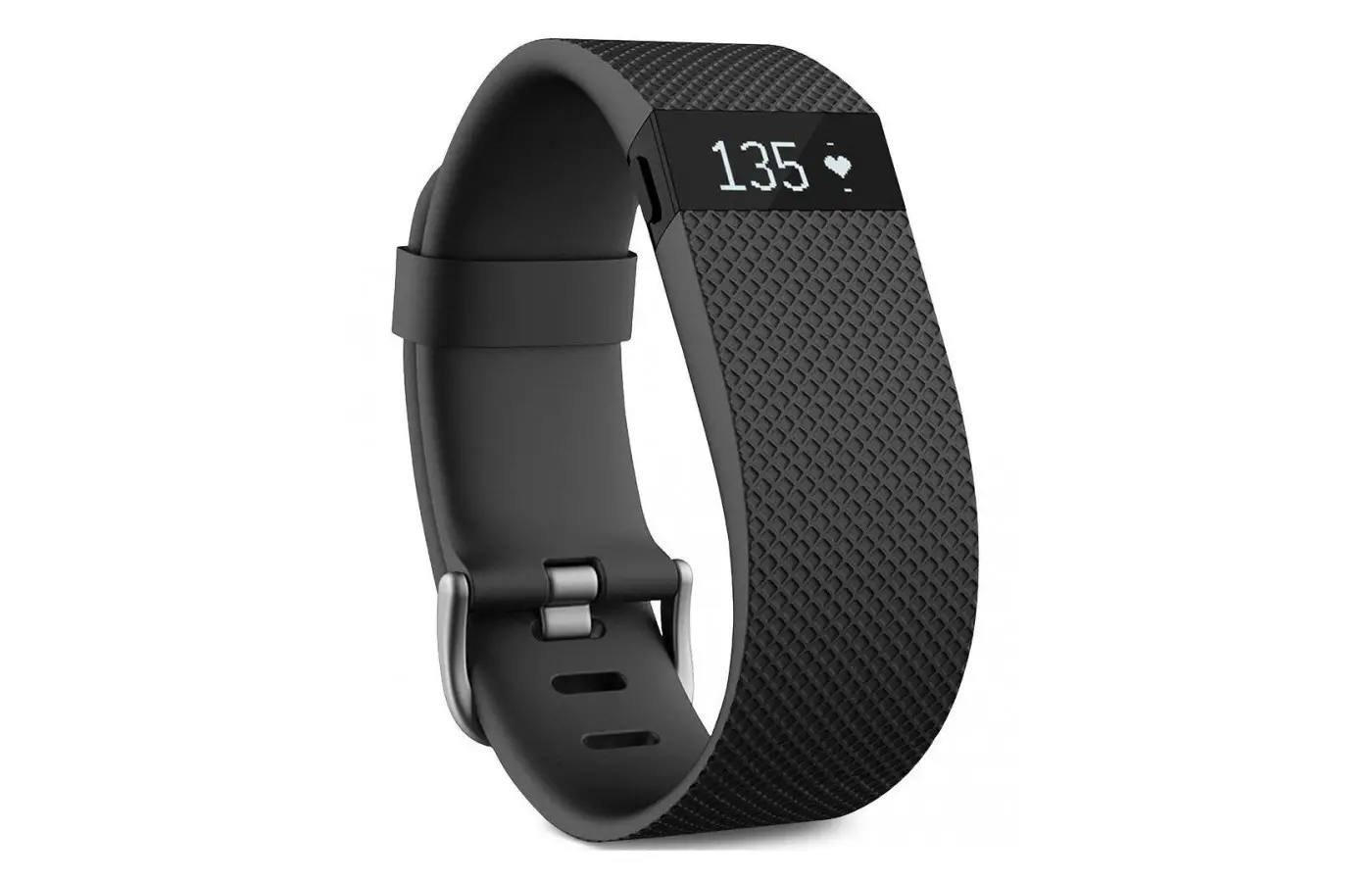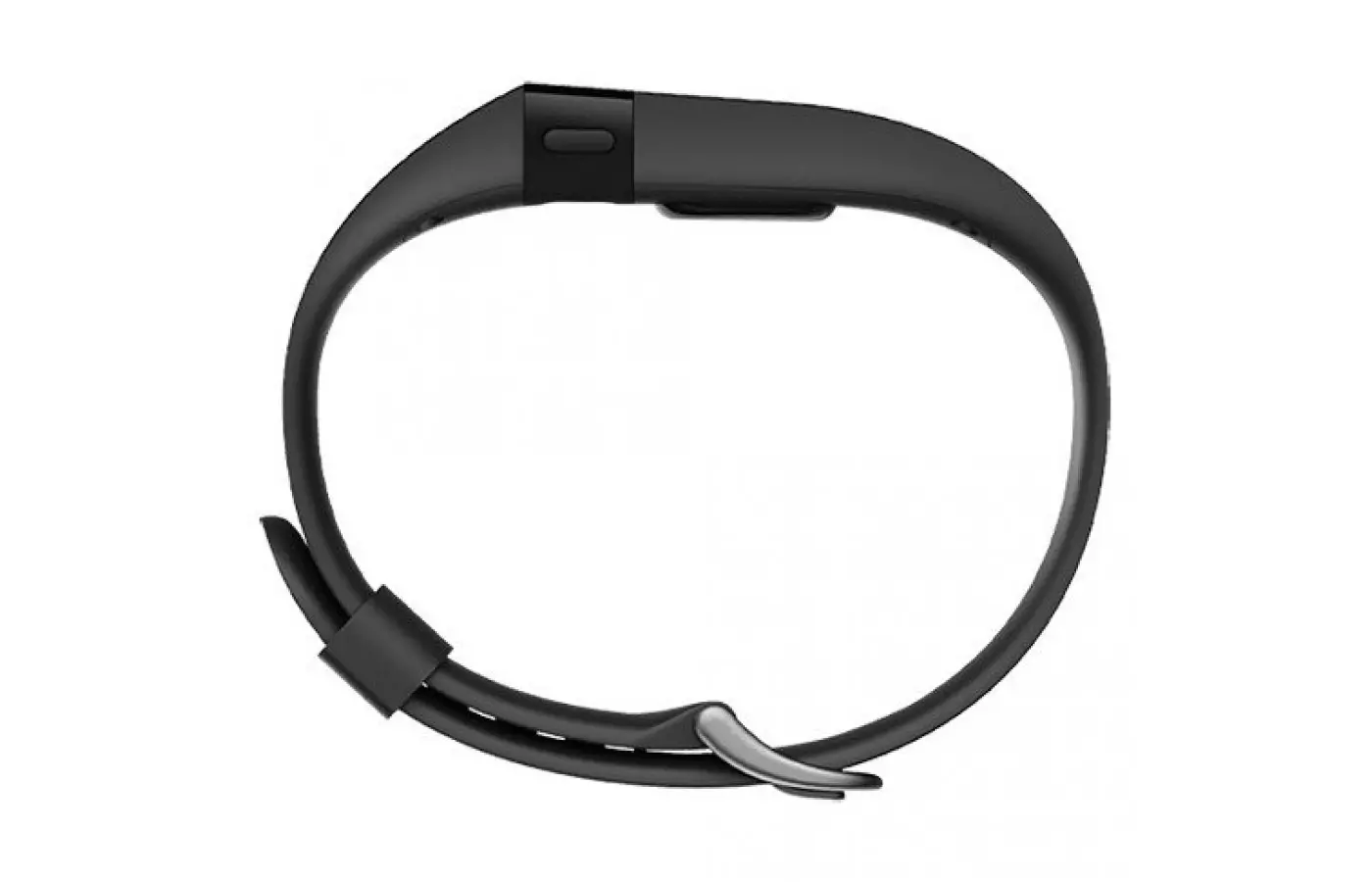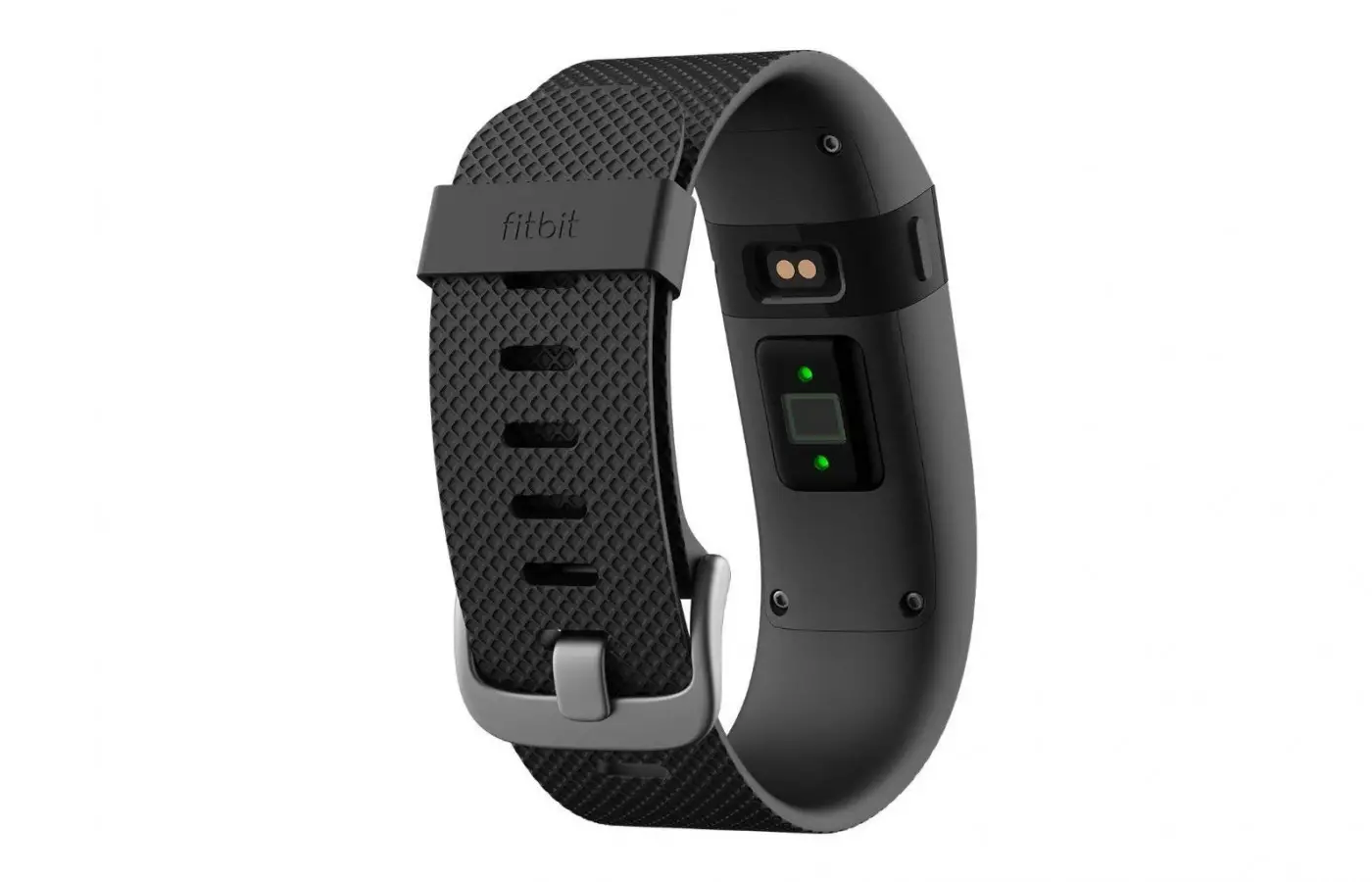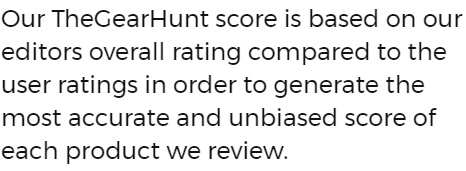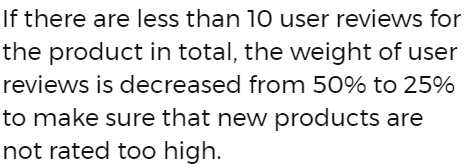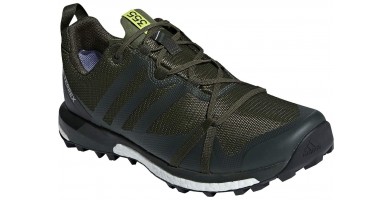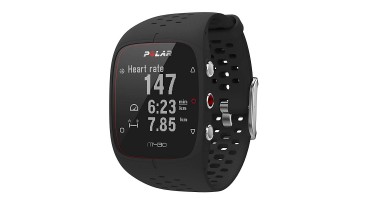Fitbit Charge HR
Fitbit Charge HR Review Facts
Every piece of technology you own exists because previous versions of that item tried and failed or worked and were then rendered obsolete by newer innovations that came along. A computer used to take up an entire room just to function; now we have the combined power of the internet in the palm of our hands. The Fitbit Charge HR was an impressive feat when it was new: a sport tracker that also monitored and recorded your heart rate, so amazing! But as time went on and technological advances kept marching forward, newer versions that did more and corrected flaws in the Charge HR were released, rendering it obsolete.
Editor's Pros & Cons
Pros
-easy to use
-sleek design
Cons
-common quality issues with the band
-outmoded
Activities
One of the features of the Fitbit Charge HR is the “SmartTrack” technology, which automatically recognizes and records certain exercises. If you started running, for example, it would notice after a few seconds that your pace and your heart rate were up and – presumably – staying up and would begin to record a run. If you were just going about your day to day, the activity monitor would still record your steps, floors climbed, and calories burned, and so on and so forth. The problem came when people got on an elliptical and noticed their Fitbit Charge HR had no idea what was happening. Sure, it knew their heart rate was up, but the step-counter and “SmartTrack” couldn’t tell what was going on. Likewise, if you found yourself pushing a shopping cart your steps were not counted properly because your wrist – and therefore the tracker sensor – was being held relatively stationary as opposed to swinging with your natural arm-swing during a normal walking motion. In theory, any activity that doesn’t involve getting wet would make sense for the general recording of your heart rate, steps, stairs, and overall distance, but as soon as you go for water or even for rock climbing, the Fitbit Charge HR loses accuracy because it doesn’t know exactly what you’re doing.
Basic Features
The Fitbit Charge HR comes with an overall distance, step counter, active minute log, sleep monitor, and floors climbed count. It also has a clock readout, silent alarms to wake you up in the morning by buzzing on your wrist, and a button to scroll through the various readouts. Essentially, it has everything a basic fitness tracker could want. What you’ve done, how long you’ve done it for, and how far you got. It will also buzz when you’ve reached your daily goals, so don’t be alarmed if you walk up ten flights of stairs and your wrist starts vibrating.
Advanced Features
In addition to the basics, the Fitbit Charge HR was so named for the innovative new addition to a fitness tracker: the cordless heart rate monitor. This particular feature isn’t as accurate as other readers, be they a physician’s medical level monitor or even a chest-strapped sport heart-rate monitor. For the purposes of a general fitness and health readout, though, it does the job as long as it is worn securely to the wrist, not loose enough to spin around or slide up and down your forearm. In addition to the heart rate monitor, a call notification readout would crawl across the screen if your Charge HR was synced with your cell phone. It wouldn’t answer the call for you, but at least you could decide if you wanted to pull out your phone and answer it or let it go to voicemail.
Connectivity
The Fitbit Charge HR had a wireless sync dongle to hook into a computer or laptop – anything with a USB port. Additionally, it could sync over Wi-Fi or mobile data to your cell phone. It bears mentioning that not every cell phone was compatible, but over 200 of the most common cell phones are compatible, and it is easy to check your phone’s version of an app store to download the free Fitbit app. Bear in mind, though, it has to be Bluetooth version 4.0 or better in order to function. Your sync might not work correctly if you happen to be using older tech.
Apps
There’s one base app to download first if you buy a Fitbit: the Fitbit app. Once you’ve connected your phone to your fitness tracker you are ready to start diving into the more fun parts of a Fitbit. You can record your progress, workouts, log your food, earn badges for breaking fitness ceilings (100 flights of stairs, 10,000 steps, for example) and even challenge your friends to competitions such as the ‘Workweek Hustle’ or ‘Weekend Warrior’ to name a few. There are also head-to-head options if you and your significant other, bestie, gym buddy, or coworker want to see who’s doing more in a day, as a fun way to keep motivated. One section of the Fitbit app is for syncing other products or apps to your Fitbit tracker and app. One of the most common examples of compatible apps is a “couch to 5k” app. It’s a beginner’s app to running a 5k in 6 or 8 weeks, depending on the version you download, and certain information can be shared simultaneously as you log your runs. Other apps are also cross-compatible, so keep an open mind if and when you purchase your Fitbit – you might have a lot more at your fingertips than you thought you would.
Comfort
Generally speaking, the Fitbit Charge HR is designed for comfort: the band is made of a flexible, semi-soft material, so unlike metal hinged or linked watch bands there is no skin pinching or hair pulling as you move throughout the day. That said, the band is a solid piece of water-resistant material, which means it doesn’t breathe very well. You will sweat wearing it, even in winter, and dead skin will get caught in the small crevices on the back of the face where the heart rate monitor presses to your skin. Be prepared to clean it carefully – you can’t stick it under a faucet to scrub it out.
Style
The Fitbit Charge HR is an activity tracker that happens to have a watch on it. It is not intended to look like a watch. There are no hands, and there are barely any edges to it – the Charge HR is somewhat no nonsense, and while the design is simplistic, it also has almost no edges to catch on anything, making it sleek and streamlined. The band is not interchangeable, but it does come in five colors, so whatever color you purchase, be sure it is a color you can live with for the duration of the product’s life. Your options are black, blue, plum, pink, and teal.
Durability
This is part of where the Charge HR enters something of a gray area. While some people reported no problems whatsoever after owning the product, some wearers gave reports of physical breakdown in as little as six months with only normal use. Without knowing the facts of any given feedback, it is hard to guess what might have caused a specific issue for certain people, when others claimed not to have a problem at all for the same duration of time but to be on the safe side, err on the side of caution: if you have the option of getting a warranty, get it. Additionally, it is an important note to mention that the Fitbit Charge HR is water resistant not water proof. It is made to withstand sweat, rain, and the occasional splash. It is not intended to be worn for swimming, water sports where it is regularly dunked or soaked, such as with paddling an OC or during water aerobics. Might the tracker survive such an activity once or twice? Maybe, but it is pointedly ignoring the manufacturer’s intended use and repeated warnings. If you want a hardcore waterproof fitness tracker, this may not be the option for you. If you are a dragonboat paddler, wear it on your top hand, not your bottom hand, and even then, you run the risk of that not being adequate if your team finds themselves in choppy water or out in the rain. If you are a surfer, one can only assume you should have a waterproof fitness tracker instead, even if you never wipe out, because you still have to paddle out to a wave, and then paddle back to shore when you are done. Common sense and what you are comfortable with is your guiding light: if you find yourself questioning the situation, your best bet is not to use it.
Face
The Fitbit Charger has a rectangular OLED display. Without getting too technical about what that means, the short version is, it has a single-color character display. The background is always black, and the light emitted as your readout is a contrasting color. The entire thing is 21mm wide and less than half that in height, so if you are hoping for a large screen, look to other fitness trackers or perhaps a smart watch with fitness capabilities, because the Charge HR is one of the smallest screens on a fitness tracker on the market. Small might work for you, if it serves its purpose, but if you need reading glasses to see the display, that’s a little hard to check while halfway through a jog around the neighborhood. Know your needs before you buy, and you will be all set to go.
Band
The same as the face, the band is 21mm wide, which means a sleek, singular width all the way around for the wearer. That means less likelihood of snagging some part of the band or face on a sleeve, as can happen with some watches that bear a thinner band than face, or a round face with a standard band, etc. The material is a flexible elastomer, meaning it can take bumps without bruising or scratching while not feeling stiff on your wrist. Holding it in place is a surgical-grade stainless steel buckle, and it functions just like a regular leather watch band or a common belt buckle. It comes in two sizes, small and large. Small means a fourteen to sixteen-centimeter diameter, and large means a sixteen to nineteen-centimeter diameter. There were some reports of being between the sizes, and having trouble figuring out which is the best option, but there is a sizing guide online for confirming what to purchase. The biggest issue reported about the band was the bubbling and separating. If water got in under the elastomer near the face or heart monitor in the back of the face, it could break down the glue there and cause bubbling. Some bubbles were small, and the wearer can continue to use the tracker; other bubbling would either grow over time or simply be damaging enough in the first place as to make the tracker unwearable. With no option to change to a new band, you are at the mercy of your warranty, or the store return/exchange policy.
Ease of Use
The Fitbit Charge HR has been called a good entry-level general fitness and activity tracker by those who are training for themselves, non-professionally. Professionals have called it inaccurate and not worth the money. Always take feedback with a grain of salt and consider the source and trends. If you are in need of exact readouts or intend to make physical fitness your career or the central focus of your lifestyle, you might want to find something a little better suited to your particular needs. There is a bit of a learning curve, but once you get the hang of it, you’ll be tapping between reading displays and meeting your step goals in no time. Even persons who consider themselves “non-tech-savvy” can use the Charge HR, and that simplicity makes it a reasonable option for anyone shopping for their first piece of tracking tech.
Battery
The official seller’s life span before requiring a recharge is “up to five days.” That’s all well and good, but the reality is that the Fitbit Charge HR – like a cell phone, a tablet, a laptop, or any other battery-powered piece of tech – will have a varied battery life based on use. If you put on a Charge HR and avoid looking at it more than a handful of times throughout the day, the odds are you are going to get more time out of it between charges than someone who checks the time, their steps, their calories burned, or other readout information more than once an hour throughout the day. Have realistic expectations – it’s a lithium-polymer rechargeable battery, not magic. However, once the power is drained to the point of needing a recharge, you only need to plug it in and in a couple of hours you’ll be back to full capacity.
Price
When it originally hit the market, the Fitbit Charge HR retailed for somewhere around the $150 mark. These days, having been outmoded by updates and cousins like the Charge 2 HR or the Alta, you can find the original Charge HR in various places online for a much more reasonable approximate price of $75. The reduced price, like most things, is a sort of “good news/bad news” situation. The “good news” is, the Charge HR is more affordable these days. The “bad news” is, there’s a reason for it. The Charge 2 HR doesn’t use the same charging port, so you can’t share; the Charge HR has been updated to the Charge 2, so original Charge HR’s are harder to find and, in some cases, may not have as good of – or any – warranty options available as when they first came out a few years ago. Truly, some retailers may even tell you to go for the newer models because the old ones may not be part of their return/exchange policies anymore. Be very careful when shopping and know your options and limitations.
Accessories
There are not really any aftermarket accessories for the Charge HR. They come with a wireless sync dongle for a laptop or computer, and a short charging cable. Most of the “extras” associated with the Fitbit Charge HR came from the app and its compatible conjoining apps, such as the running trainer app “Couch to 5k” or the like. Eventually more Fitbit-brand extras such as a smart scale hit the market, but in theory any Fitbit tracker could be connected to the scale through the Fitbit app itself, so that isn’t an accessory exclusive to the Charge HR. With a non-interchangeable band, the Fitbit Charge HR is essentially ‘what you see is what you get’. A noteworthy experience for the Fitbit Charge HR was how motivational the app and tracker could be. Virtual badges you can collect are a great way to feel like you have made a worthy accomplishment, when a silent readout might not be enough to keep someone motivated. Challenging your friends can keep you interested; sharing your progress to Facebook or Twitter (more apps you can link to the Fitbit app) means getting cheers from your friends and family. The varied means of providing positive feedback makes Fitbit a brand worth looking at, because not every fitness tracker offers this capability.
Key Features
-heart-rate monitor
-activity and workout recorder
-motivational challenges on app
-activity and workout recorder
-motivational challenges on app
Bottom Line
There are plenty of satisfied customers who use the Fitbit Charge HR, but there are also unsatisfied ones in decent numbers. The Fitbit Charge HR was an impressive piece of popular technology when it hit the scene a few years ago, and if you’re shopping for it because you’ve never had a fitness tracker before and want simple and easy to use, you can still find a Charge HR. Even if it only lasts you a year or two, you’ll have developed a better understanding of how fitness trackers work and can go on from there without investing an exorbitant amount of money in your first tracker. Just keep it clean and dry, and it will suit your needs just fine. More intense fitness-inclined persons, such as personal trainers, competitive sports athletes, or those training individually for more strictly regimented lifestyle choices, might need something a little more intense and durable. Don’t discount the Fitbit Charge HR right away.





